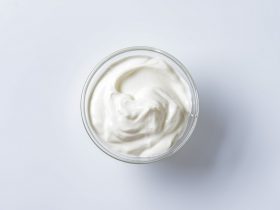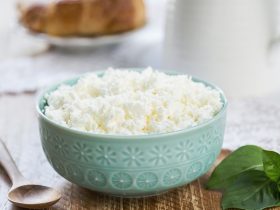Mushrooms, aside from being nutritious, have unique attributes with regard to their color, flavor, odor and texture (Ganesan & Xu, 2018). Now, who would not want a treat like that? Pregnant women, however, must be wary of their food choices because whatever they eat can also affect their baby.
Pregnant women must be doubly careful when eating mushrooms. Mushrooms can be consumed safely during pregnancy, as long as they are the edible type and they have been washed and cooked properly. Pregnant women must be careful not to ingest the poisonous types of mushrooms as these can lead to fatal consequences.
Jesmarie Macapagal, RN, MD, DPPS
In this article, we will find out more about what mushrooms are, as well as the benefits and risks of consuming them. Afterward, we will discuss how mushrooms can be made safe for pregnant women to eat. Read on and find out if mushrooms are a right match for your dietary needs.
What is a Mushroom?
A mushroom is the fruiting body (sporophore) of fungi, that are usually shaped like an umbrella. The term mushroom is often used to identify the edible sporophores, while the term toadstool is customarily reserved for inedible or poisonous sporophores.
The major value of mushrooms is as a specialty food of gentle flavor and pleasant texture. Traditionally, mushrooms are considered as a type of food delicacy that are consumed either raw or cooked (Enshasy et al., 2013). The most commonly consumed mushrooms worldwide today are the button mushrooms (Agaricus bisporus), oyster mushrooms (Pleurotus), and shiitake mushrooms (Lentinula edodes), which together comprise about three-fourths of all mushrooms consumed (Cardwell et al., 2018).
Benefits of Eating Mushrooms
Nutritional Value
Edible mushrooms are an excellent source of nutrients. Mushrooms are rich in carbohydrates, with concentrations ranging from 20 percent up to 70 percent of the dry weight. They also contain high levels of insoluble fiber (Enshasy et al., 2013).
Mushrooms provide significant amounts of protein (De Mattos-Shipley et al., 2016), which usually comprise approximately 30 percent of the dry weight. In addition to the high protein content, the proportion of essential amino acids in mushrooms makes them of higher nutritional value compared to plant proteins (Enshasy et al., 2013).
Mushrooms are rich in essential minerals, primarily potassium (Jayachandran et al., 2017), but also including sodium, calcium, magnesium, sulfur (Enshasy et al., 2013), phosphorus and iron (De Mattos-Shipley et al., 2016). Likewise, mushrooms contain many essential trace elements, including manganese, copper and selenium (Enshasy et al., 2013), high proportion of polyunsaturated fatty acids (PUFA), and vitamins, including B1, B2, B12, C, D and E, on top of their good flavor (Kozarski et al., 2015).
Meanwhile, mushrooms are low in calories and fat, and contain zero cholesterol (De Mattos-Shipley et al., 2016). Their lipid (fat) content ranges from 2 to 6 percent of dry weight (Enshasy et al., 2013), or only 20 to 30 grams per kilogram (Valverde et al., 2015).
Antioxidant and Other Health Benefits
Mushrooms have been used in folk medicine since ancient times. The bioactive compounds found in mushrooms serve to prevent serious diseases, such as diabetes, obesity, cardiovascular disease (CVD) and neurodegenerative diseases (Kanagasabapathy et al., 2013). In Asia, mushrooms are used as home remedies against many diseases caused by oxidative stress (Kozarski et al., 2015).
Edible mushrooms have been observed to provide antioxidant benefits. Their antioxidant properties can be attributed to their bioactive compounds, including polyphenols, polysaccharides, vitamins, carotenoids and minerals (Kozarski et al., 215). Edible mushrooms contain significant amounts of selenium, which is also a potent antioxidant (Wang et al., 2015).
Mushrooms have been reported to scavenge reactive oxygen and nitrogen species, chelate redox-active metals, inhibit lipid peroxidation, increase the levels of endogenous antioxidants like vitamin C and glutathione, and increase the activity of antioxidant enzymes like glutathione reductase and catalase (Sevindik et al., 2020).
Moreover, mushrooms have other important biological activities, including antitumor, anticoagulant, antidiabetic, hypolipidemic, immunostimulant (Kozarski et al., 2015), antiviral, antibacterial, anti-inflammatory, and anti-allergic (Venturella et al., 2021).
Mushrooms may also protect against hypertension and dyslipidemia associated with obesity. In 2018, Ganesan & Xu found that regular consumption of mushrooms was an effective treatment for obesity and metabolic syndrome.
Vitamin D
Vitamin D is important during pregnancy. It is essential for bone health, muscle contraction, nerve conduction and general function of the cells. Low concentrations in the blood of pregnant women have been associated with adverse pregnancy outcomes, including preeclampsia, gestational diabetes, low birth weight, and severe postpartum bleeding (Palacios et al., 2019).
The vitamin D status of any pregnant woman directly affects her infant, as the fetus is totally dependent on the vitamin D levels in the mother’s blood. Adequate vitamin D intake can help prevent neonatal hypocalcemia, which may lead to softening of bones (craniotabes and rickets), and in severe cases, seizures and dilated cardiomyopathy (Pilz et al., 2018).
According to The American College of Obstetricians and Gynecologists (ACOG, 2011), the Food and Nutrition Board at the Institute of Medicine of the National Academies established in 2010 that sufficient intake of vitamin D during pregnancy and lactation was 600 international units (IU) per day (equivalent to 15 micrograms per day).
Vitamin D is acquired mainly from exposure to sunlight. Very few foods naturally contain vitamin D. These include mushrooms, fish-liver oils, fatty fish, egg yolks and liver (Palacios et al., 2019). Edible mushrooms are said to contain high amounts of vitamin D and vitamin B complex (Wang et al., 2015), probably in the wild.
However, most retail mushrooms sold in the market are grown and harvested in atmospherically controlled rooms, which are usually dark with no sunlight. Therefore, the vitamin D content of retail fresh mushrooms sold around the world is commonly less than 1 microgram per 100 grams of dry weight, as reported by The National Nutrient Database of the United States Department of Agriculture (USDA) for shiitake, white button and oyster mushrooms (Cardwell et al., 2018).
Nevertheless, mushrooms that were exposed to sunlight or ultraviolet (UV) radiation are an excellent source of dietary vitamin D. So much so that mushroom producers have now begun to expose their mushrooms to UV radiation to considerably increase their product’s vitamin D content (Keegan et al., 2013).
In 2018, Cardwell et al. recorded significant amounts of vitamin D, over 10 micrograms per 100 grams of dry weight, from fresh button mushrooms that were exposed to midday sunlight for 15 to 120 minutes. This level approximates the daily requirement for vitamin D intake with just one serving of mushroom per day.
Prebiotics
Mushrooms act as prebiotics that stimulate the growth of beneficial gut microbiota, thereby providing a number of health benefits. The gut microbiota plays an important role in the immune system by providing a barrier effect. The good bacteria in the intestinal flora serve as immunological barriers against bad bacteria (Jayachandran et al., 2017).
A healthy gut microbiota has been shown to reduce the risk of a number of diseases (Conlon & Bird, 2014). Prebiotics decrease the number of endogenous pathogens found in the gastrointestinal tract, allowing for the immune system to increase its ability to repel exogenous pathogens (Jayachandran et al., 2017).
Mushrooms are considered as potential sources of prebiotics because they contain different nondigestible polysaccharides, including chitin, hemicellulose, mannans, alpha- and beta-glucans, galactans, and xylans. They act as prebiotics and enhance the growth of probiotic bacteria in the gut (Singdevsachan et al., 2016).
Another important metabolic function of the gut microbiota is the synthesis of vitamin K and B vitamins (LeBlanc et al., 2013).
Risks of Eating Mushrooms While Pregnant

Poisoning
Poisoning from eating wild mushrooms is common. It may produce only mild gastrointestinal symptoms or a minor allergic reaction. However, it may also become fatal. Therefore, it is important that every mushroom be identified accurately before consumption.
Numerous reports about ingestion of poisonous mushrooms are documented every year from different parts of the world. Mushroom poisoning is a global food safety concern and has been one of the most common causes of deaths from food poisoning (Patocka et al., 2021).
Certain species of mushrooms produce mycotoxins (De Mattos-Shipley et al., 2016). About a hundred known species of mushrooms are toxic to humans, while new toxic species continue to be identified (Graeme, 2014).
In the last few years, over a hundred kinds of poisonous mushrooms have been identified. More than 30 of them are able to cause fatal toxicity (Patocka et al., 2021). Ingestion of these poisonous mushroom species accounts for hundreds of deaths worldwide each year (Graeme, 2014).
The “fiber head mushrooms” (genus Inocybe) are a frequent cause of mushroom poisoning. They are ubiquitous all over the world and are often confused with edible species due to their similar appearance. However, they are muscarine-containing and may cause symptoms of nausea, vomiting, diarrhea, abdominal pain, diaphoresis, hypotension, tremor, flushing and syncope (Lurie et al., 2009).
The lethal dose of muscarine in humans for Inocybe mushrooms is approximately 500 grams of raw mushroom. But 10 to 20 grams of raw Inocybe mushroom is already sufficient to cause poisoning (Patocka et al., 2021).
Magic Mushrooms
Magic mushrooms, also called “shrooms”, are a type of mushroom consumed for recreational purposes. They contain psilocybin and psilocin, which are regulated substances in many countries (Shirota et al., 2003) and are often considered illegal. Therefore, pregnant women must never consume magic mushrooms.
Psilocybin and psilocin are neurohallucinogenic toxins and can lead to hallucinations, uncontrollable laughter and extreme excitement after ingestion. Hence, they are also called “laughing mushrooms” (Patocka et al., 2021).
How to Eat Mushrooms Safely During Pregnancy
Do Not Eat Raw Mushrooms
Mushrooms grow in soil. Fresh mushrooms, together with fresh fruit and vegetables, are recognized as principal vehicles of infection with food borne parasites. In particular, those with a fecal-oral route of transmission were identified, including Echinococcus multilocularis and Toxoplasma gondii. Therefore, ingestion of raw mushrooms can lead to infection with echinococcosis and toxoplasmosis (Robertson et al., 2016).
According to the Centers for Disease Control and Prevention (CDC, 2020), pregnant women who acquire toxoplasmosis can transfer the infection to their babies. Majority of infants infected do not exhibit symptoms at birth, but they can develop blindness or mental disability later in life. Infrequently, infected newborns can also have eye or brain damage at birth.
Wash Mushrooms Thoroughly
Many cooks and chefs prefer to clean mushrooms by brushing, instead of washing, to avoid soaking them in water. However, trace amounts of soil and dirt can remain in the mushroom’s crevices. Therefore, it is important to wash mushrooms thoroughly under clean running water before cooking them.
Cook Mushrooms Properly
The process of cooking kills bacteria and parasites that may be present in foods. Hence, cooking edible mushrooms makes them safe for consumption during pregnancy. You can choose to add mushrooms as an ingredient in any cooked dish or cook them as an entirely separate dish.
Avoid Eating Wild Mushrooms, Especially Those You are Not Able to Identify
A lot of poisonous mushrooms look similar to edible types. Therefore, it is best to stick to commercially available mushrooms in supermarkets that are known and well-identified. Avoid picking mushrooms in the wild because a lot of them may be toxic to you and your baby.
Final Thoughts
Button, oyster and shiitake mushrooms can be great choices during pregnancy. They are healthy and can provide important nutrients and health benefits, while protecting you from increased fat and cholesterol intake.
Stick to the ones being sold in the market for easier identification and make sure that they are properly washed and cooked before consumption. Avoid all raw and wild mushrooms, and never take magic mushrooms.
Safety for you and your baby is what matters the most. For proper and professional advice regarding your dietary intakes, consult your health care provider.
References
- https://www.britannica.com/
- Cardwell, G., Bornman, J., James, A., & Black, L. (2018). A review of mushrooms as a potential source of dietary vitamin D. Nutrients 10(10), 1498. doi: 10.3390/nu10101498
- Centers for Disease Control and Prevention (CDC). (2020). Toxoplasmosis: Pregnancy FAQs. https://www.cdc.gov/parasites/toxoplasmosis/gen_info/pregnant.html
- Conlon, M., & Bird, A. (2014). The impact of diet and lifestyle on gut microbiota and human health. Nutrients 7(1), 17-44. doi: 10.3390/nu7010017
- De Mattos-Shipley, K. M., Ford, K. L., Alberti, F., Banks, A. M., Bailey, A. M., & Foster, G. D. (2016). The good, the bad and the tasty: The many roles of mushrooms. Studies in Mycology 85, 125-157. doi: 10.1016/j.simyco.2016.11.002
- Enshasy, H. E., Elsayed, E., Aziz, R., & Wadaan, M. (2013). Mushrooms and truffles: Historical biofactories for complementary medicine in Africa and in the Middle East. Evidence-based Complementary and Alternative Medicine 2013, 620451. doi: 10.1155/2013/620451
- Ganesan, K., & Xu, B. (2018). Anti-obesity effects of medicinal and edible mushrooms. Molecules 23(11), 2880. doi: 10.3390/molecules23112880
- Graeme, K. (2014). Mycetism: A review of the recent literature. Journal of Medical Toxicology 10(2), 173-189. doi: 10.1007/s13181-013-0355-2
- Jayachandran, M., Xiao, J., & Xu, B. (2017). A critical review on health promoting benefits of edible mushrooms through gut microbiota. International Journal of Molecular Sciences 18(9), 1934. doi: 10.3390/ijms18091934
- Kanagasabapathy, G., Malek, S. N., Mahmood, A. A., Chua, K. H., Vikineswary, S., & Kuppusamy, U. R. (2013). Beta-glucan-rich extract from Pleurotus sajor-caju (Fr.) Singer prevents obesity and oxidative stress in C57BL/6J mice fed on a high-fat diet.
- Keegan, R. J., Lu, Z., Bogusz, J., Williams, J., & Holick, M. (2013). Photobiology of vitamin D in mushrooms and its bioavailability in humans. Dermato-Endocrinology 5(1), 165-176. doi: 10.4161/derm.23321
- Kozarski, M., Klaus, A., Jakovljevic, D., Todorovic, N., Vunduk, J., Petrović, P., …, & van Griensven, L. (2015). Antioxidants of edible mushrooms. Molecules 20(10). 19489-19525. doi: 10.3390/molecules201019489
- LeBlanc, J. G., Milani, C., de Giori, G. S., Sesma, F., van Sinderen, D., & Ventura, M. (2013). Bacteria as vitamin suppliers to their host: A gut microbiota perspective. Current Opinion in Biotechnology 24(2), 160-168. doi: 10.1016/j.copbio.2012.08.005
- Lurie, Y., Wasser, S., Taha, M., Shehade, H., Nijim, J., Hoffmann, Y., …, & Bentur, Y. (2009). Mushroom poisoning from species of genus Inocybe (fiber head mushroom): A case series with exact species identification. Clinical Toxicology 47(6). 562-565. doi: 10.1080/15563650903008448
- Palacios, C., Kostiuk, L. K., & Peña-Rosas, J. P. (2019). Vitamin D supplementation for women during pregnancy. The Cochrane Database of Systematic Reviews 7(7), CD008873. doi: 10.1002/14651858.CD008873.pub4
- Patocka, J., Wu, R., Nepovimova, E., Valis, M., Wu, W., & Kuca, K. (2021). Chemistry and toxicology of major bioactive substances in Inocybe mushrooms. International Journal of Molecular Sciences 22(4), 2218. doi: 10.3390/ijms22042218
- Pilz, S., Zittermann, A., Obeid, R., Hahn, A., Pludowski, P., Trummer, C., …, & März, W. (2018). The role of vitamin D in fertility and during pregnancy and lactation: A review of clinical data. International Journal of Environmental Research and Public Health 15(10), 2241. doi: 10.3390/ijerph15102241
- Robertson, L., Troell, K., Woolsey, I. D., & Kapel, C. (2016). Fresh fruit, vegetables, and mushrooms as transmission vehicles for Echinococcus multilocularis in Europe: Inferences and concerns from sample analysis data from Poland. Parasitology Research 115, 2485-2488. doi: 10.1007/s00436-016-5015-4
- Sevindik, M., Akgul, H., Selamoglu, Z., & Braidy, N. (2020). Antioxidant and antigenotoxic potential of Infundibulicybe geotropa mushroom collected from Northwestern Turkey. Oxidative Medicine and Cellular Longevity 2020, 5620484. doi: 10.1155/2020/5620484
- Shirota, O., Hakamata, W., & Goda, Y. (2003). Concise large-scale synthesis of psilocin and psilocybin, principal hallucinogenic constituents of “magic mushroom”. Journal of Natural Products 66(6), 885-887. doi: 10.1021/np030059u
- Singdevsachan, S. K., Auroshree, P., Mishra, J., Baliyarsingh, B., Tayung, K., & Thatoi, H. (2016). Mushroom polysaccharides as potential prebiotics with their antitumor and immunomodulating properties: A review. Bioactive Carbohydrates and Dietary Fibre 7(1), 1-14. https://doi.org/10.1016/j.bcdf.2015.11.001
- The American College of Obstetricians and Gynecologists (ACOG). (2011). Vitamin D: Screening and supplementation during pregnancy. https://www.acog.org/clinical/clinical-guidance/committee-opinion/articles/2011/07/vitamin-d-screening-and-supplementation-during-pregnancy
- Valverde, M. E., Hernández-Pérez, T., & Paredes-Lόpez, O. (2015). Edible mushrooms: Improving human health and promoting quality life. International Journal of Microbiology 2015, 376387. doi: 10.1155/2015/376387
- Venturella, G., Ferraro, V., Cirlincione, F., & Gargano, M. L. (2021). Medicinal mushrooms: Bioactive compounds, use, and clinical trials. International Journal of Molecular Sciences 22(2), 634. doi: 10.3390/ijms22020634
- Wang, K., Bao, L., Xiong, W., Ma, K., Han, J., Wang, W., …, & Liu, H. (2015). Lanostane triterpenes from the Tibetan medicinal mushroom Ganoderma leucocontextum and their inhibitory effects on HMC-CoA reductase and α-glucosidase. Journal of Natural Products 78(8), 1977-1989. doi: 10.1021/acs.jnatprod.5b00331




